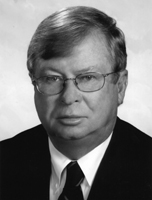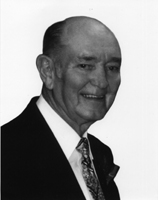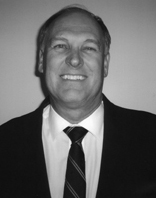 |
||
 |
 |
 |
Gary Bodenmiller South Lake |
Jack Davis St. Johns/Ovid-Elsie |
Marty Snoap Lakewood |
(click on Inductee's name to read 'description')
 |
||
 |
 |
 |
Gary Bodenmiller South Lake |
Jack Davis St. Johns/Ovid-Elsie |
Marty Snoap Lakewood |
(click on Inductee's name to read 'description')

There are actors and there are producers. There are stars and then there are those who prefer to work behind the scenes. There are those who get the applause and those whose contributions make the applause possible.
Certainly we who have attended MHSTeCA clinics over these many years have known (or at least suspected) that the force behind Bob Wood’s microphone, the guy who gets the details done, is the one who resides in a back room come clinic time with no desire to appear on stage, even to briefly take a bow for what he does. As Bob says: “I get most of the credit because I make most of the announcements and I’m very visible. However, if the truth be known, Gary does ninety percent of the work before the workshops begin. The workshops would not take place if it were not for Gary Bodenmiller.” Gary is the guy who gets the speakers. He’s the one who assigns the topics, does the scheduling, rounds up the vendors, writes the brochure, and produces the clinic workbook. He and his wife Janet (along with Kathy Wood, Tiger Teusink, Karen Page , and others) are there to handle the rush of registration. Then he makes himself available to solve problems and put out fires. He’s been doing it for 30 years.
In the meantime, Bob deals with the hotel in terms of accommodations and banquets, and is the contact person at the MHSTeCA with regard to its role in the clinic. And, of course, he introduces the speakers. He would prefer to spend some air time talking about Gary , but Gary will have none of it. “He is the opposite of a big shot,” says Chuck Wright, Hall of Fame coach from Grosse Pointe University Liggett. “He shuns the spotlight and deflects praise to others.” Even still, you don’t get into the Michigan High School Tennis Coaches Hall of Fame by organizing clinics. Indeed, after all these years, relatively few coaches know that Gary initiated the first tennis team for the South Lake Schools in St. Clair Shores in 1967. In one year, the squad went from 0-10 (1967) to 20-2 (1968). From 1967 to 1972, Gary ’s teams posted a 101-20 won/loss record. In fact, he was the first coach in Michigan high school tennis history (actually, tied with Bob Love of Port Huron ) to play a girl on a boys team during an era when there were no girls teams.
“His teams were always very competitive and well-coached,” says Bob. “He ran summer programs to make them better.” To be specific, Gary was tennis director for the cities of St. Clair Shores , East Detroit , and Riverview from 1968-72. Adds Chuck Wright, “He developed several Class A players who give him a great deal of credit for their success in the game.” One was Ihor Debryn who would have been Gary ’s first nationally ranked player had Gary not opted to go into “the tennis house” business. Instead, Ihor became Bob’s first nationally ranked player at University Liggett School , one who went on to play 3S for the University of Michigan .
Gary left a solid South Lake program in the capable of hands of his roommate John Burke, who enjoyed such success that he, in turn, was inducted into the MHSTeCA Hall of Fame in 1993. Instead, as manager and owner of several racquet clubs in the area, Gary continued to contribute to the sport by not only giving lessons and providing an indoor facility to enable play in the wintertime but by donating court time to local high schools for practices and tournaments. “He has helped the sport grow on the east side of Detroit for decades,” says Chuck.
Gary was clearly good at the job. He became a USTA National Tennis Clinician who represented the USTA several times at the National Tennis Teachers Conference in New York City, throughout the Midwest, and at the International Racquet Sports Association in Dallas, Texas. He was founder and director of the USTA Detroit Schools Program for the City of Detroit . He was a clinician for the President’s Council on Physical Fitness. He published tennis-related articles in International Racquet Sports Association News, the USPTA National Newsletter, and Club Business. He once wrote and published a book entitled Drills for Skills.
In the midst of all of this activity, Gary received lots of awards from the Midwest USPTA, having been involved in tennis in a variety of capacities for 39 years . For instance, he was named national runner-up in 1999 by the USPTA as “the tennis professional who did the most for their community in the U.S. ” He currently serves on the Board of Directors for the Southeastern Michigan Tennis Association.
And, of course, he and Bob started running the Detroit Tennis Workshop in 1977 and added the Chicago workshop in the early ‘80s. These are a universally acclaimed gatherings that have for three decades hosted some of the best clinicians in the world and annually draw 300 high school tennis coaches. Every fourth year, the clinic also hosts the USPTA pros who rotate between Detroit , Chicago , Indianapolis , and Columbus . “I have always related to the high school coach as opposed to the teaching professionals even though I spent five years coaching high school tennis and 34 years as a teaching professional,” says Gary .
It would be easy to conclude that had Gary stayed in high school tennis, he would have qualified for the Hall of Fame the conventional way: lots of dual meet wins, regional championships, and high finishes at the state tournament. However, truth be told, he probably would have instead become the athletic director of South Lake, thus providing an enviable amount of support for whoever was fortunate enough to be his tennis coach. More to the point, it is an understatement to say that Gary qualifies for the Hall of Fame under the criterion: “Must be a coach who has worked cooperatively with fellow coaches for the advancement of the game of tennis and the coaching profession.” After all, almost everyone whose plaque hangs on the Hall of Fame wall in Midland , as well as hundreds of others, has benefited from what he has done.
| Back to Top |
Credit for such treatment of female tennis players as local heroes can be traced to the efforts of one man who worked his magic in a community that, to say the least, had not enjoyed tennis success until he arrived on the scene. In 1987, Jack Davis walked into the athletic director’s office and stated that he not only wanted the job but that his team would beat rival St. Johns and become conference champions within five years. The AD laughed, said the job was his, and wished him luck.
But truth be told, Jack didn’t need much luck. He had already acquired considerable tennis coaching experience after being lured late in life by his doubles partner, Al Werbish of St. Johns , who brought him on board to coach the Redwing boys JV team when Davis retired from the U.S. Postal Service. In addition, having gone into the infantry right out of high school in St. Louis , Missouri , Jack said that he got his early training in tennis coaching while working his way up to sergeant. “There’s no better training for coaching a high school girls tennis team than being a sergeant in the army,” he once declared to the Clinton County News. “The main difference is that the troops won’t break into tears for no reason, and the girls sometimes will.”
In Jack’s first year at the helm, his team turned in the usual 2-10 record but the following year, the squad improved to 6-6. It wasn’t until his third season, 1989, that the athletic director realized that he was witnessing something special when the team finished at 11-2, more wins than the squad had captured in the previous seven seasons combined. In addition, that third year squad brought home the first invitational title in the school’s history, finished second in the conference, and ended with a best-ever 3 rd at the regional tournament. In a regional where the most points that Ovid-Elsie had previously won was three, that year’s squad missed state competition by one point. In turn, Jack Davis was named MHSTeCA Regional Coach of the Year. And the best was yet to come. That’s because Jack fulfilled his promised to the athletic director a year early when in 1990, O-E went 9-1, won the Lancer Invitational, beat St. Johns , and captured the conference championship, the first Mid Michigan B tennis title in the school’s history. After rebuilding during 1991 and 1992, the 1993 squad went on to post a perfect 11-0 record and again were conference champions. Ditto for 1994, but this time they added a regional championship to the total, thus earning a trip to the state championships where they finished 12 th . In 1995, an impressive 28 match win streak came to end but by then, winning tennis at O-E had become a tradition. Expectations were high.
People weren’t disappointed in 1997 when the team was not only undefeated but finished 6 th in the state, the best ever for the school. In other words, Jack’s legacy was a 49-6 dual meet record; a 21-3 league record; conference champions in 1993, 1994, and 1997; regional champions in 1994 and runners-up in 1997; and three trips to the MHSAA state championships.
In the midst of all this success, Jack became a fixture and a symbol of tennis in the area. He co-directed the St. Johns Mint Festival Tennis Tournament and co-directed the St. Johns Jr. High Tennis Clinic. He also started and directed the O-E all-area/all-age Tennis Clinic.
However, “this old ticker is going to give out on me sometime,” he said to a newspaper reporter in 1998. Sadly enough, nine months after that 6 th place finish at the state finals, his players attended a church service filled with young faces with tears in their eyes and smiles on their faces as the pastor spoke of the joy that each player brought to the coach whom they loved and respected. In 11 years, Jack had built something from nothing. He created an O-E presence in a world often dominated by club players, private schools, and larger schools.
In a relatively short time, Coach Davis became a local legend whose legacy endures. Having hosted visiting schools on virtually unplayable courts, he lobbied for new courts and although several bond issues were turned down, O-E players stepped onto eight brand new courts on August 9, 2004 , five years after Jack’s death. Since he passed away, the Marauders have made three additional trips to the state finals under the coaching of former player Mary Bradley. There is little doubt that some emulate the “Famous Davis” handshake when they win.
The handshake is a little slice of immortality, a simple representation of what the man accomplished. Jack lives on in the hearts and lives and memories and handshakes of those players who became something more than a tennis team. Indeed it has been said that nobody ever died who had a family (a group he once jokingly characterized as 12 pretty girls and one ugly old man). His Hall of Fame plaque is simply one more symbol of his unique ability to “pass it in.”
| Back to Top |
A few years ago, the girls team at Lakewood High School chose as their slogan – proudly proclaimed from the backs of their sweatshirts – the declaration: “Service with a Smile.” In addition to the obvious pun, perhaps these kids recognized in the phrase the most telling attribute of their coach, the quality which has provided far more for his kids than lessons in how to hit a forehand volley or the number of championship trophies brought home. Indeed, both words service and smile barely scratch the surface with regard to what Marty Snoap has given to the kids and community of Lake Odessa over 33 years.
For over three decades, Marty was a coach’s coach, a father figure who led what quickly became a team family. In addition to stroke fundamentals, he taught his kids etiquette and social skills. More importantly, he created a positive and fun environment which earned him the respect and gratitude of kids and parents. And he did the extras. For instance Marty would travel with his boys to Florida for spring break to practice tennis. In August he would take the girls and many of their parents to Holland State Park for a few days of camping, sharing, and practicing. He instituted “story time” at the beginning of practices, an opportunity for kids to share concerns, vent frustrations, and celebrate daily triumphs. “On our last day of practice for every season, he would bring a stereo out to the courts and line dance, have an egg toss contest, and special story time,” said former player Cindy Kruisenga. “He arranged trips down to Florida where we would practice during the day, but at night he would take us to a restaurant to sing karaoke.” Marty’s players quickly learned that they not only had a coach who made the game fun but who used tennis as a vehicle to make them better people. Indeed, testimony from his kids about the way he coached them often begins with the words: “I am one of the privileged people to have been coached by Marty Snoap.” Examples are numerous. “My senior year in high school, I broke my wrist shortly after the season began, and once the injury healed enough for me to play, I was no longer a threat to opponents,” said Travis Williams. “Coach knew this, but he let me play my final high school match anyway. He knew that I couldn’t pull out the victory, but that didn’t stop him from giving me advice and encouragement when I was really down. He gave me the chance to finish my high school tennis career on the court with a racquet in my hand.” “One thing that remained constant from the first day until the final match at Lakewood High School was Marty’s enthusiasm for teaching the game of tennis,” said Brian Reed. “He shared this joy with ankle biters up through the top players in the varsity ranks. He was the reason I wanted to take up the game at a competitive level.” Coach Jim Niebling of Portland echoes this sentiment. “While many coaches know the better players on the teams with whom they compete. Marty knows all of my players, good, bad, and otherwise,” he said. “He’s a gentleman in a world of all-too-often competitive coaches.”
There are only six tennis courts in Lakewood district which covers 250 square miles, yet Marty annually carried boys and girls teams of 25-30 players, yet his influence extended even further. For years he organized a summer program which often brought in future opponents who would eventually go on to compete for rival high schools. Marty himself tells a story about how a couple of East Grand Rapids parents approached him at the state tournament several years ago to thank him for inspiring their daughter to keep playing tennis five years prior. Instead of changing her lessons from tennis to piano, that little girl was now at the state tournament beating a Lakewood Viking. “We got hammered by my own self,” he said chuckling.
In addition, for several years Marty was the commissioner of the Ralph E. Ellis Inter-City (now USA Team Tennis) League that boasted teams in over 30 communities. As such he ran yearly “level” tournaments that affected many young players in a positive way. Gary Ellis of Allegan says, “My daughter has many memories of her junior tennis career and among her favorites are the times she played in Snoap-run tournaments. Each year Marty ran a tournament, she entered. He has a way of making all the players feel special.”
Robert Kruisenga says: “Each of my daughters has carried on their tennis careers in college. One of them received the Sue Little Award for sportsmanship at the MIAA tournament held at Albion College . “ Although I would like to take credit for this as a father, I must say that much of the credit goes to Coach Snoap because that’s the way he teaches the game.
At the end of “tennis nights,” recalls Marty’s daughter Carrie, “I remember hearing my dad tell my mom all about his matches. Sure, frequently he had to report that his team hadn’t won the match, but I seem to remember him always putting in several ‘buts.’ For example, commenting on how a certain player didn’t double fault any of her serves or how a player from another team had bullied one of his kids and how great his player had handled it.”
“I was so proud,” adds Carrie, “because everyone always commented on how great my dad was. Some kids would comment about how they wish their dads would teach them to play a sport or make up fun games to learn, like he did. His love of coaching and emotional investment in the program and his players radiates in his personality. He demonstrated to us how to love your job.”
“My dad even let me help coach some of his younger players,” continues Carrie. “We attended USTA umpire classes together so that I would be official. What I see as the best part of his coaching is not only how he affects his players, but how he affects his family. My dad’s love of coaching and emotional investment in the program and his players radiates in his personality. He brought his job home with him.”
Although Carrie claims that she didn’t inherit the her dad’s athletic genes (Marty was a four-year starter in both basketball and baseball at Hope College, captaining both squads his senior year), the same cannot be said for son Chris who won the Division 3 singles title in 1997, earned a tennis scholarship to Flagler College in St. Augustine, Florida, and continues to play numerous USTA adult events. Thus, it should be no surprise that the Snoap clan was named Tennis Family of the Year by the Midwest Tennis Association, a branch of the USTA.
“He more than glows when he steps onto a tennis court and begins coaching,” said former player Noelle Williams. This joy and enthusiasm is evidenced as well at the annual February clinic where Marty has always been an eager volunteer to help a clinician demonstrate drills.
Hence it seems only appropriate that Marty’s far-reaching influence should extend a bit further as his image – affixed to a specially-prepared plaque – journeys to Midland to take its rightful place beside his peers at the Michigan High School Tennis Coaches Association display.
| Back to Top |